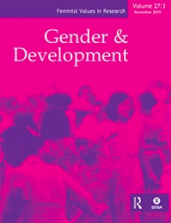Visible outside, invisible inside: the power of patriarchy on female protest leaders in conflict and violence-affected settings

Overview
The literature on women’s participation in public protests and movements shows that even when they are prominent actors within these, most women are excluded from the male-dominated decision-making spaces within which negotiations with the state occur. In this article we look at the case of an ethnic struggle for rights in a conservative and conflict-affected region in which women have gained prominence over time, to the extent that they are the face of the protests. We find that this has led to changes in the nature and purpose of the struggle: from male-dominated violent protests focused on expressions of anger, to female-focused peaceful sit-ins holding the state accountable for a lack of security. However, we continue to see women excluded from the spaces within the movement where decisions are made: despite being visible to the outside world, women protesters are invisible in decision-making inside their community and homes. Why are women protest leaders unable to transform their temporary public leadership into more enduring forms of influence? We draw on 13 in-depth interviews with 13 Hazara women leaders, key in mobilising other women in the city of Quetta in Pakistan, to provide some explanations for why protest presence and leadership has not resulted in a greater decision-making role. We find the intersection of patriarchy, identity politics, and social structures playing a key negative role on Hazara women’s influence in decision-making processes. Women within movements cannot be empowered in the absence of wider shifts in patriarchal social norms – even when they actively take on the state – but there are visible changes in their expectations and perceptions of their own role.
Keywords
Additional details
Author(s)
How to cite this resource
Citation styles vary so we recommend you check what is appropriate for your context. You may choose to cite Oxfam resources as follows:
Author(s)/Editor(s). (Year of publication). Title and sub-title. Place of publication: name of publisher. DOI (where available). URL
Our FAQs page has some examples of this approach.



